Increased humidity in the cellar appears for various reasons. First of all, it is necessary to find out why it has risen, take measures to eliminate, and then lead it to normal. At the last stage - if necessary, to carry out disinfection. In any case, without properly organized ventilation and waterproofing, the problem will appear again and again. Therefore, before driving the cellar, check the ventilation pipes did not hit whether the waterproofing was injured.
Prevent the appearance of dampness
As usual, this "disease" is easier (and cheaper) to prevent than to treat. It is still solved at the design stage:
- The material of the walls and gender should have a low degree of hygroscopicity, poorly carrying water both in liquid and in a gaseous state. The best from this point of view is the high-quality concrete - from M400 and higher. But he builds a lot. It is possible to add special substances that increase water-repellent properties to the usual M200 or M250. (About the brands of concrete and their composition here)
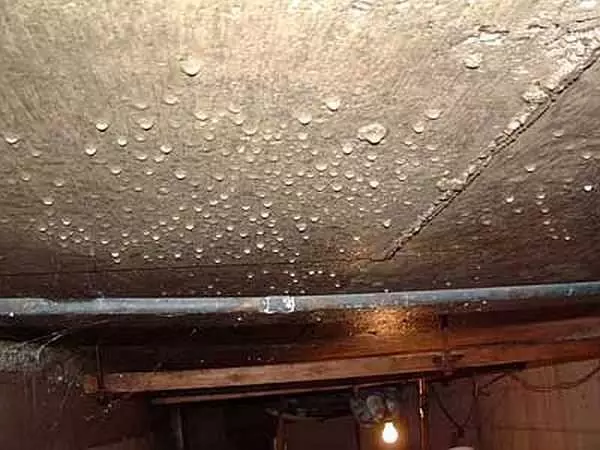
Eliminate condensate in the cellar is more difficult than preventing it in appearance
- If the groundwater is close or in spring / autumn their level increases significantly, outer waterproofing is necessary. Liquid formulations (Better) are applied to the walls outside, or roll (cheaper, but less efficient).
- If the cellar is built on the slope, above it, it is necessary to put a drainage tube into the ground, which will divert down the slope of the precipitate.
- Around the cellar (or the building under which he is) make a break, which takes the precipitation flowing from the roof.
- Inside the cellar in opposite angles there should be two ventilation pipes with a diameter of at least 125 mm. One of them ends at the floor level - 10 cm above. Through it enters the air from the street or room (supply tube). The second ends in almost the ceiling - 10 cm below its level. This is a hood. Ventilation pipes on the street should be closed with umbrellas so that they do not get foliage and precipitation. The exhaust pipe (the one that ends next to the ceiling) should be higher and it is better to install a deflector on it - to activate the thrust. It can be painted in black: due to the heating from the sun, the thrust should be better. Another subtlety: that the thrust is good, ventricular with natural air movement should be straight. If you need to make a removal to the side, its angle of inclination must be at least 60 ° relative to the horizon, the length of the inclined section should not exceed 100 cm.
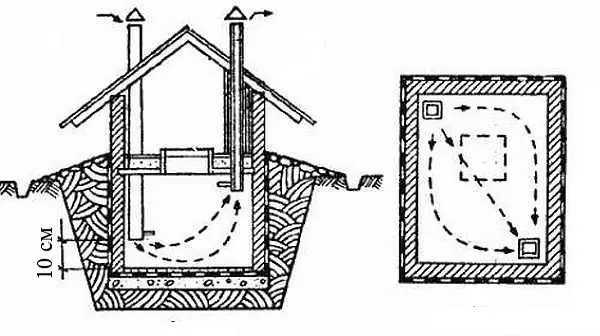
Drying cellar without ventilation is a complex occupation. In the figure, the scheme of the organization of ventacanals to maintain normal humidity in the cellar
- Between the room, located on top and basement, vapor barrier, preventing the penetration of moisture from both the basement and the basement.
Inspect the floor
Very often in the cellar of the floor make earthen. Often it is a source of excessive humidity. Through it, the moisture contained in the ground falls inside. To reduce the moisture in the cellar, you need to align the ground floor, to the tump and set to the thick polyethylene film. You can use the runneroid, but it is more likely. Although it seems more durable, but breaks due to less elasticity.
Top on the film pouring sand or land is not necessary. Sometimes there is a large amount of water in the basement (random flooding). Then the film is simply removed, water takes part in the ground, partly evaporates through ventilation. After the dampness is gone, you can set the floor again. If the Earth or Sand will be from above, you will need to pick it up in this juicy, getting a film.
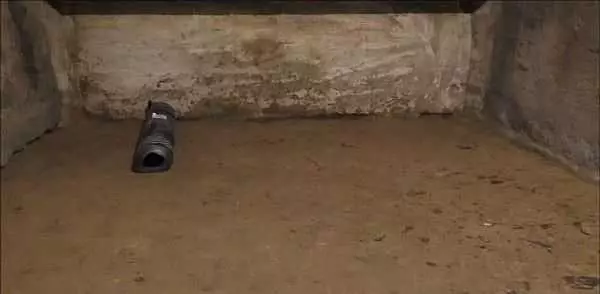
If the floor in the earth's cellar - through it and the most moisture comes
If after laying the film the level of humidity in the cellar decreased, then you found the reason. You can leave everything as it is, only periodically change the "flooring", and you can make a concrete floor with full waterproofing. The choice is yours. So that the film does not rush when it goes, run away wooden shields and throw them on the floor.
Improve waterproofing
The second reason why humidity increases in the basement - the insufficient degree of vapor barrier or waterproofing of the walls. This is usually found if the cellar is lined with bricks in particular - silicate. The material is very hygroscopic and well passes the water pairs. They settle drops on the ceiling and all objects.
The problem can be solved if you make good outer waterproofing: dig a wall and apply bitumen mastic in two layers. Previously, they were deceived by the resin, but the mastic is more efficient and easier in circulation.
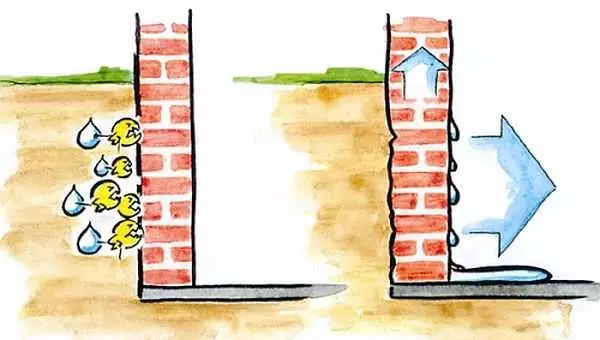
Brick walls require additional waterproofing
But earthworks are far from always to joy, and not always the walls can be dug. In this case, you can make the inner waterproofing of the cellar walls. For this, there are impregnation based on cement: "Pink", "Calmatron", "Hydrotect", etc. They penetrate to a half-meter in the thickness of the material (concrete, brick, etc.) and block the capiles for which water seeps. The water permeability decreases at times. The only minus is the price. But they are really effective.
All these measures will prevent the emergence of high humidity in the basement. But what if the moisture is already there, how to dry the cellar? Next, consider ways to reduce humidity.
How to organize a drip watering of the garden independently read here.
Preparatory work
From the basement, all reserves, as well as all wooden structures, are well cleaned. On the street inspect wood - shelves / boxes / boxes. If they are not injured, there are no fungus or mold, they are simply folded in the sunshine for drying. If there are traces of lesion, wood is impregnated with a solution of copper sulfate (a concentration of 5-10%, not more).
Good results gives the whims of lime - she will also "collect" moisture from the air. Therefore, before dying the basement makes sense to whitewash everything. Just do it not as outside. You need to apply a thick layer of lime on the walls. To do this, make a bucket of thick whitewings, add a bit of the diluted copper mood. It is an excellent disinfector, but the concentration should not be higher than 5-%, maximum - 10. The resulting thick liquid is spilled in half into two containers.
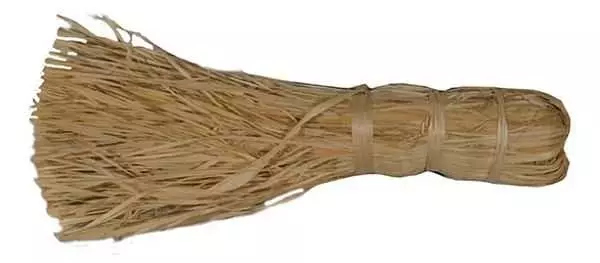
So looks like a painting brush for blissing
The first half is lowered into the basement, dressed in old things, put on glasses, cover hands. Take a painting brush for blissing (it is more like a small broom) and it is well aware of the corners. Then the brush is breaking out, and splash it on the walls and the ceiling. Just macat in thick whitewash and splash on the walls. They are covered with drops, lime tubercles.
After everything was covered with lime, we are waiting for a day until it gets up. Everyone repeat with the second bucket. As a result, the walls and ceiling are obtained porous and uneven. But the condensate on them is rarely hanging: lime is quite well kept moisture inside. After the lime gets free, you can begin drying the cellar.
Construction of the greenhouse with their own hands is described here.
Drain of basement with ventilation
Sometimes it happens: it was dry in the cellar, and suddenly dampness appeared. One of the reasons is bad ventilation. First of all, check the purity of Ventkanalov. If necessary - clean. If everything is fine, but dampness does not leave - it means the exhaust pipe works badly. It turns out when the air in the cellar is colder than on the street. Heavy and cold, he himself will not rise through the pipe. There is a paradoxical, at first glance, the situation: it was cold on the street and raw - it was dry in the cellar. Warmed - moisture drops hung and the ceiling, walls and objects, appeared a sharp smell. Here in this case, to dry the cellar, it is necessary to activate the movement of the air. There are several solutions.
- On the exhaust pipe to put a powerful fan that will pull the air. Ensure the influx of air masses - open the hatch if there are windows or dampers. For a few days (from three to ten) everything will dry.
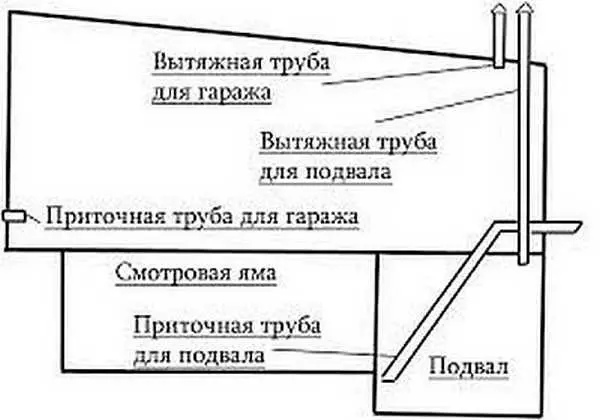
Organization of ventilation basement in the garage with observation pit
- Take advantage of the old "grandfathers" with a candle. It is suitable if there is no electricity and the fan is nowhere to turn on. It happens if the cellar is built separately, on the street. To dry it, in the exhaust pipe (the one that ends under the ceiling) temporarily fight so that it almost touches the floor (5-10 cm was higher). A burning candle is added under it, but it is put on some kind of non-combustible foundation. Due to the fact that the air in the pipe is warmed up, normal thrust occurs, the raw air from the floor pulls out. Candle change until the basement is dry. Instead of candles, you can use dry alcohol tablets. Sometimes, the air movement began, the candle flame is not enough. Then, in the pipe, you first apply a piece of the burning newspaper (only carefully, do not fall and do not melt the ventilation), after it burned, wear a burning candle.
Sometimes the increase in air movement leads to the fact that the humidity in the cellar does not decrease, but increases. This can often be observed in hot weather. The reason is that. Preheated air carries with itself a significant amount of moisture in the form of vapors. Finding into the cool cellar of the air cools, and the moisture condenses on the coldest surfaces: the ceiling, walls, sometimes on the shelves and banks. If you have such a case, then the ventilation stops. Even close the supply pipe and slam the lid well, limiting the inflow of warm air.
How to dry the cellar in this case? Wait for autumn, and when the rains are not yet, but the temperature is already + 10 ° C, start ventilation by one of the proposed methods. Works. If you have a cold night in the summer, you can turn on the fan overnight, and in the daytime of the vent rip. So gradually you can reduce the humidity in the cellar and in the summer.
Heat the cellar
If it is necessary to remove dampness even during warm weather, and ventilation only worsens the situation, you need to heat the air in the basement so that it comes out to the outside, carrying out moisture (the higher the air temperature, the more vapor it may contain).
To do this, take an old bucket or other metal container about the same volume. Make a lot of holes in it (you can ax) in the bottom and walls. Such a holey bucket is tied to the cable (secure securely). Inside, coals are poured for kebabs (you can burn yourself), the bucket should be almost complete. Coals incite and achieve stable burning (to overclock the burning, you can adapt the vacuum cleaner on blowing it out). The bucket with smoldering coals is lowered on the cable inside the cellar, they are fixed so that it hangs over the bottom, cover the lid.
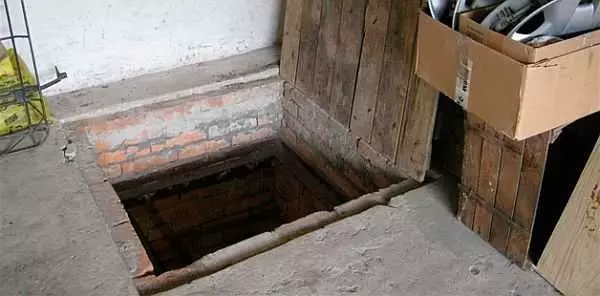
The lid on the cellar in the house should be practically hermetic
Periodically, the cellar cover must be opened, inlet an additional portion of oxygen (every 20-30 minutes). You can put the fan on the supply tube or periodically turn on the same vacuum cleaner. If the coals still went out, they are burned again.
Attention! Inside it is better not to climb, do everything from above. First, the temperature there is high (indoors of about 2 * 3 meters about 70 ° C), secondly, the smoke accumulates and, maybe the carbon monoxide.
As coals burned, the bucket got, the cover was closed. Three days inside do not look: smoke and gases will kill mold and at the same time with a drying you will disinfive your cellar. Usually one such "firebox" is enough to dry the basement in the house or on the street. Similarly, you can get rid of dampness in the basement under the garage.
Sometimes instead of charcoal use coke or stone coal. It gives a higher temperature and "Processing" passes longer, but it is harder to burn, it requires more oxygen, often - forced imaging (to adapt the old vacuum cleaner and corrugated, but turn it on blowing it). But the temperature rises even higher and dried is still more efficient. But the price of coke is large, even because of the purchase of a bucket and you will not break.
Instead of a bucket with burning coal, you can use other heaters:
- The burner on the propane (omitting the burning on the wire, to watch it so that she did not heat anything and leave hanging in the middle, as tired, the valve is closed, you can open the cover only every other day);
- thermal gun of decent power (3-5 kW);
- Kirogas;
- Lower to the basement bourgeois and protrud.
You can use all these ways, but you have to fall into the cellar in order to ignite Kirogas or Bourgehog. And this is an unsafe and alone such a way do not use such a way. It is necessary that someone insured you upstairs. Relative to the heat gun: it is also better to drag it with a cable (knitted), and not to descend.
How to dry the basement in the garage is told in the video.
How to make high beds (to increase yields) read here.
How to dry the cellar without ventilation
If the ventilation did not do during construction, it is advisable to arrange it now. At least some: get rid of dampness will be easier. It is better, naturally, two pipes are one on the influx, the second on the outflow - as described at the beginning of the article. If the cellar is made separately on the street - it is easier to organize: struck the land and the roof of the cellar, inserted pipes, poured all with concrete solution.
It's more difficult with the garage, but it is decided here for aesthetics. But if the basement without ventilation under the house, make it all harder: the foundation is better not to break, and you will not stretch a lot of pipes in the floor to the room. But even in this case, do at least one pipe. Let even through the cover, output into the wall or ceiling, put the supplier fan. It can be included on the feed, then on the exhaust and in such a way, at least somehow drip the cellar.
Having at least such ventilation can be used by any of the methods described above. You can also try to collected moisture. For this inside Enclosed hygroscopic materials:
- Pouring dry sawdust, how wet - throw out, fall asleep new ones. Dried this basement is not dried, but the humidity will lower. Condensate droplets on the ceiling will not be accurate.
- Slaked lime. It is folded around the perimeter, along the walls and on racks. She not only collects moisture, but also kills fungi couples.
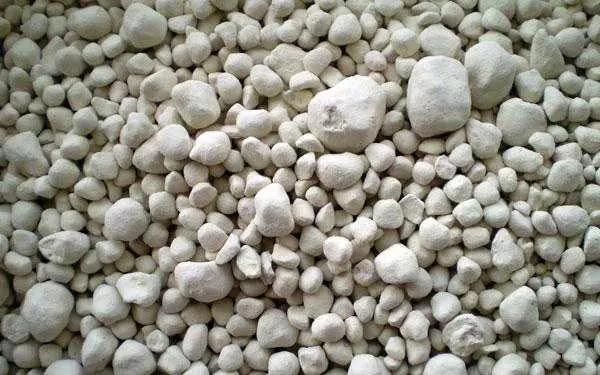
Haired lime can be used to reduce humidity in the cellar
- Calcium chloride. 1 kg of dry matter absorbs 1.5 liters of water. Buy any tens of kg, lay out, collected after a day, warming up (calcining) and you can again use again. Only work should also be careful: chlorine and calcium pairs are also toxic.
- Dry cardboard boxes. No matter how funny, but they also absorb moisture well. Lay several pieces of dry, after 12-20 hours they are so wet that they are almost sprawling in their hands. Throw away, throw new ones. Cheap and angry. The cellar does not dry at all, but condensate from the ceiling and walls will gather.
If all these dances with the tambourines do not inspire confidence (although they work), driving the cellar using modern technology. There are such household appliances - Household air dryers . They are more likely to put in the pools to get rid of dampness indoors. Need a model of average power. They cost about 20-30 thousand rubles, they work from the household network 220 V. In the process, moisture from the air in a special container. You will need to merge water periodically.
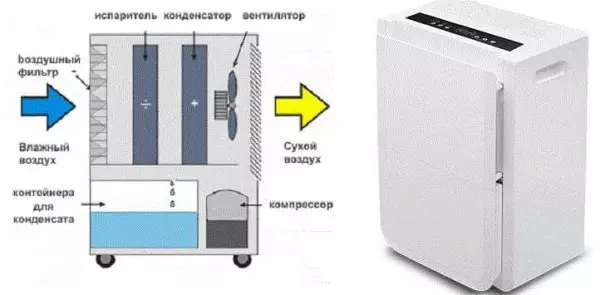
One way to dry the crude basement is to put a household air dryer
Disinfection and fighting fungi and mold
Increased humidity in the cellar will go to the fact that on the walls, shelves, the ceiling appears mold, fungi of different types and colors, and all this beauty is accompanied by "aromas". In this case, all that can be taken out of the cellar - take it out and lay out to be dried. Wooden shelves, boxes, boards, racks After drying, leverage with the addition of a solution of copper sulfate. Better twice.In the cellar from the walls and the ceiling, you consider all the growths, whiten lime with copper vitriol twice (the technology is described at the beginning of the article). Before the main drying, you can spend special events that destroy the dispute (or for some time they are neutralized).
Couple lime
In the cellar put a barrel to pour a negro lime. Lime takes at the rate of 3 kg per 1 cubic meter volume. In the barrel of lime should be a maximum, a little more than half. All pour water. Do not interfere. Quickly get out and tightly (hermetically) close the lid and all ventilation channels. You can open two days later, to ventilate good, then you can go down.
Repeat processing after 7-10 days. Couples of lime should smear mold and fungi, destroy insects and their larvae. They also with smells of damp and sharpness very effectively cope. True, a few days in the cellar will smell lime.
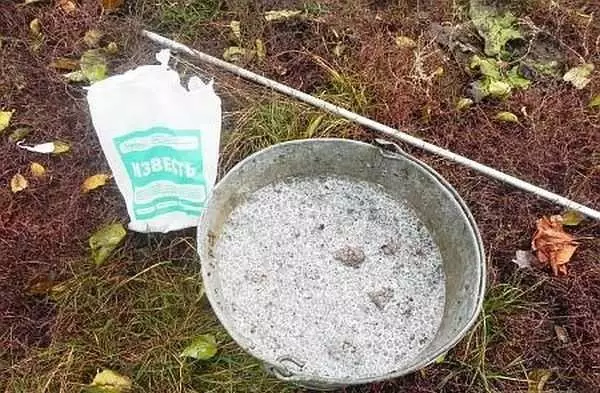
Disinfection of the cellar with lime vapors
Sulfur (smoke) checker
Use a sulfur checker. They are sold in stores selling seeds or workers. Each has an instruction. But, if briefly, you need to act according to the following scheme:
- Take all metal things if it is impossible, cover their lubricant layer - solidol or something similar.
- Gilt the wick of sulfur checkers, it starts to smooth.
- Quickly come out, the lid and vent riples are hermetically close, leave for 5-6 hours.
If the basement in the house, it is desirable to leave it at the time of processing: a couple of breaths in insufficient tightness and the lungs will need to be put into order for a long time.
Disinfection occurs due to the formation of sulfuric acid. It is obtained with a sulfuric anhydride and water reaction. Therefore, it is more effective than mold with a sulfur checker killed in wet cellars.
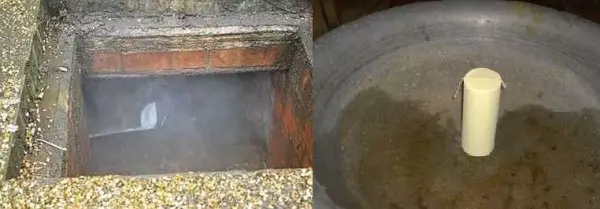
Sulfur checkers put on metal, ignite, quickly leave and close all holes
After 5-6 hours (or after the time specified on the package), open the ventacanals and the lid (in such a sequence). Leave at least 12 hours open. Gas residues are weathered during this time. You can go.
From the experience of the operation of such checkers, it can be said that it is necessary to light them twice as much as the norm. Then everything will really be neutralized.
Mold removal tool
Sometimes white fluffy pigs appear on wood or walls. This is one of the types of fungi. It can be struggling with the methods described above, but if only it is present, it can be found in the construction market to remove a solid mounting foam (sell there, where and foam). Tube Insert into the mounting gun and apply to the places with fungus. It instantly begins to turn around. And then in this place does not appear.
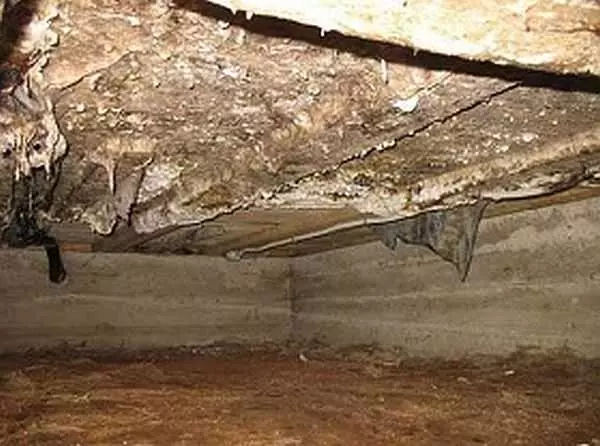
From this unclean, you can get rid of the installation to remove the mounting foam
Underfilling on the floor
If you have an earthen floor, the bed on it is a dense polyethylene film (for which it is described above), run the wooden grids and throw them on the floor. Under them to scream pieces of haired lime. And I will collect moisture to collect the fungi to create "bad" conditions.How to dry the basement after flooding
If the flooding was random - you need to pump water in any available way, and then act according to the standard scheme:
- To make everything you can make their cellar.
- Leave for a while all the open lid and ventilation products.
- When more or less freeze, remove the garbage, fungi, mold from the walls and floor.
- Cheer lime.
- Dry one of the ways.
If the subtoping is periodic - in the spring, for example, you will have to make a full-fledged drainage system, and this is a separate conversation.
All the ways described above how to dry the cellar for the most part are based on practical experience. They enjoy everywhere and very often. In one case, one method works, in the other - the other. Your task is to find the most efficient for your situation.
Article on the topic: Patchwork: Photo is beautiful and easy, all secrets, pictures, sewing from stripes, master class, video instruction with your own hands
